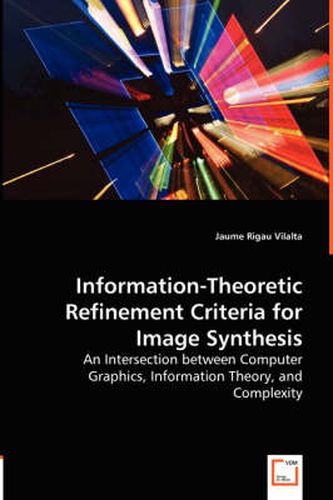Readings Newsletter
Become a Readings Member to make your shopping experience even easier.
Sign in or sign up for free!
You’re not far away from qualifying for FREE standard shipping within Australia
You’ve qualified for FREE standard shipping within Australia
The cart is loading…






This title is printed to order. This book may have been self-published. If so, we cannot guarantee the quality of the content. In the main most books will have gone through the editing process however some may not. We therefore suggest that you be aware of this before ordering this book. If in doubt check either the author or publisher’s details as we are unable to accept any returns unless they are faulty. Please contact us if you have any questions.
This work is framed within the context of computer graphics starting out from the intersection of three fields: rendering, information theory, and complexity. Initially, the concept of scene complexity is analysed from a geometric visibility point of view. Then, the main focus of this dissertation, the development of new refinement criteria for the global illumination problem is presented. Firstly, based on Shannon entropy, a set of pixel measures are defined. They are applied to supersampling in ray-tracing as refinement criteria, obtaining a new entropy-based adaptive sampling algorithm with a high rate quality versus cost. Secondly, based on Harvda-Charvat-Tsallis generalised entropy, new refinement criteria are defined for hierarchical radiosity. Oracles based on transported information, information smoothness, and mutual information are presented, with very significant results for the latter. And finally, three f-divergences are analysed as refinement criteria. These measures give us a rich variety of efficient and highly discriminative measures which are applicable to rendering in its pixel-driven (ray-tracing) and object-space (hierarchical radiosity) approaches.
$9.00 standard shipping within Australia
FREE standard shipping within Australia for orders over $100.00
Express & International shipping calculated at checkout
This title is printed to order. This book may have been self-published. If so, we cannot guarantee the quality of the content. In the main most books will have gone through the editing process however some may not. We therefore suggest that you be aware of this before ordering this book. If in doubt check either the author or publisher’s details as we are unable to accept any returns unless they are faulty. Please contact us if you have any questions.
This work is framed within the context of computer graphics starting out from the intersection of three fields: rendering, information theory, and complexity. Initially, the concept of scene complexity is analysed from a geometric visibility point of view. Then, the main focus of this dissertation, the development of new refinement criteria for the global illumination problem is presented. Firstly, based on Shannon entropy, a set of pixel measures are defined. They are applied to supersampling in ray-tracing as refinement criteria, obtaining a new entropy-based adaptive sampling algorithm with a high rate quality versus cost. Secondly, based on Harvda-Charvat-Tsallis generalised entropy, new refinement criteria are defined for hierarchical radiosity. Oracles based on transported information, information smoothness, and mutual information are presented, with very significant results for the latter. And finally, three f-divergences are analysed as refinement criteria. These measures give us a rich variety of efficient and highly discriminative measures which are applicable to rendering in its pixel-driven (ray-tracing) and object-space (hierarchical radiosity) approaches.